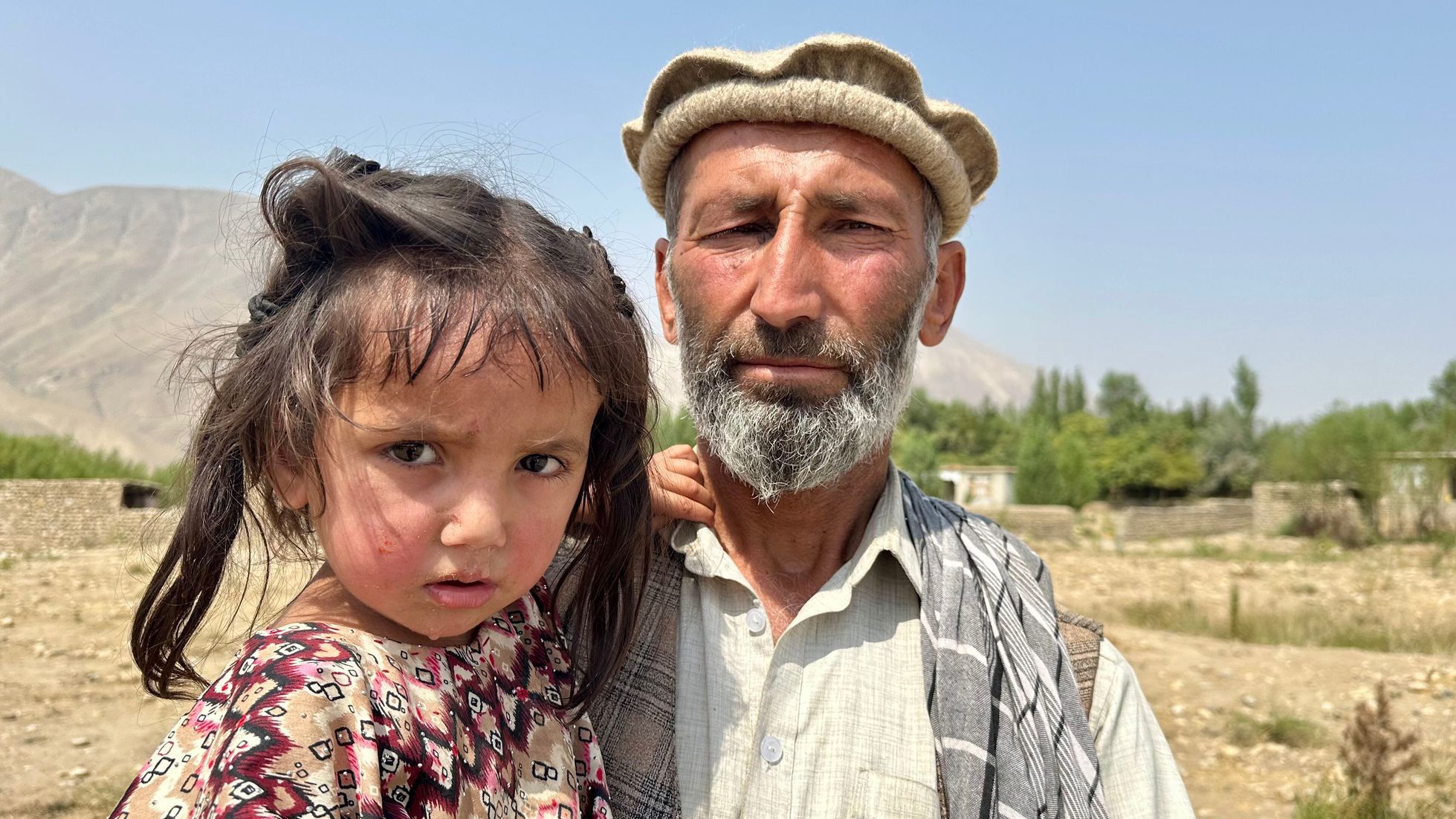The intersection of politics and healthcare often becomes most visible when policies move from abstract numbers on a budget to life-or-death realities in families’ lives. In a story that has sparked outrage and soul-searching across the United States, one grieving woman has spoken publicly about losing her wife during childbirth, alleging that funding cuts enacted under former President Donald Trump played a decisive role in the tragedy.
- The Woman’s Testimony: A Personal Tragedy Becomes Public
- Maternal Mortality in the United States: A Growing Crisis
- Trump’s Healthcare Cuts: The Policy Backdrop
- The Rural Healthcare Collapse
- Expert Voices: Connecting Policy to Personal Loss
- The Political Fallout: Trump, Healthcare, and Public Opinion
- The Human Face of Policy Decisions
- Calls for Reform and Change
- FAQs
- What did the woman allege about Trump’s funding cuts and her wife’s death?
- How do maternal mortality rates in the U.S. compare to other developed nations?
- What specific funding cuts are critics linking to increased maternal deaths?
- Why are rural hospitals particularly affected by funding cuts?
- What reforms are being proposed to address maternal mortality?
- Conclusion
This deeply personal account is not just about one family’s grief—it is about a system stretched thin, a healthcare structure weakened by political decisions, and the human consequences of policies many see as indifferent to vulnerable populations.
The story resonates because it embodies a broader American crisis: maternal mortality rates in the United States remain among the highest in the developed world. While maternal healthcare should be a universal right, it is increasingly shaped by budget priorities, political battles, and partisan divides. This article explores the woman’s account, the broader context of maternal health in America, how funding cuts affected hospitals and healthcare access, and the political storm surrounding Trump’s healthcare agenda. Through storytelling, expert insights, and data, we will examine how this one tragic death has come to symbolize a much larger national struggle.
The Woman’s Testimony: A Personal Tragedy Becomes Public
The unnamed woman, who chose to share her story through advocacy networks and media interviews, recalled how her wife experienced complications during childbirth in a rural hospital already struggling with limited resources. According to her account, the hospital lacked sufficient staff, essential medical equipment, and timely emergency response capabilities. The result was a preventable death that has haunted her family ever since.
She argues that these shortcomings can be traced directly to Trump-era funding cuts, particularly those targeting women’s health programs, Medicaid expansion incentives, and rural hospital subsidies. For her, this was not just a tragic coincidence but a predictable outcome of underfunding life-saving programs. “My wife didn’t die because of fate.
She died because our healthcare system was starved,” she said in an emotional statement. Her words strike at the core of a debate that blends economics, politics, and morality: should budgetary choices that weaken healthcare safety nets be viewed as indirect causes of deaths like hers?
Maternal Mortality in the United States: A Growing Crisis
The United States has long faced scrutiny for its high maternal mortality rates compared to other developed nations. According to the Centers for Disease Control and Prevention (CDC), the maternal mortality rate in the U.S. reached 32.9 deaths per 100,000 live births in 2021, a shocking increase from previous years. Black women are disproportionately affected, facing a rate nearly three times higher than that of white women.
Experts often cite fragmented healthcare, unequal access to prenatal care, underfunded rural hospitals, and inconsistent insurance coverage as contributing factors. Many of these vulnerabilities were exacerbated by funding cuts and policy shifts during the Trump administration. For example, reductions in Title X funding, which supports reproductive health services, and the administration’s rollback of Medicaid expansion incentives weakened critical safety nets. For women in rural and underserved communities, these policy decisions often meant fewer providers, longer travel times for care, and delayed emergency responses—all of which can be deadly during childbirth complications.
Trump’s Healthcare Cuts: The Policy Backdrop
The Trump administration pursued an aggressive agenda aimed at rolling back federal spending on healthcare programs, with a particular focus on undoing the Affordable Care Act (ACA). While Congress did not repeal the ACA outright, the administration succeeded in undermining several key pillars.
- Medicaid Cuts and Restrictions: The administration pushed states toward work requirements for Medicaid, which advocacy groups warned could push millions off coverage. Medicaid is one of the largest payers for childbirth in the United States, covering nearly 42% of all births. Restricting access meant many women entered pregnancy without consistent medical coverage.
- Title X Program Cuts: Title X funding provides reproductive healthcare, contraception, and prenatal services to low-income individuals. The Trump administration enacted a “gag rule” preventing providers receiving Title X funds from offering or referring patients for abortion services, leading to a mass exodus of providers and reducing care availability across the country.
- Rural Hospital Closures: Federal funding cuts to rural health initiatives worsened financial instability for small hospitals. Between 2010 and 2020, more than 120 rural hospitals closed, with many closures accelerating during the Trump years. This left pregnant women in rural America with fewer options for maternity care.
Critics argue that these moves were not cost-saving measures but ideological battles waged at the expense of vulnerable families. The case of the grieving woman who lost her wife during childbirth has become emblematic of how these policies trickled down into devastating outcomes.
The Rural Healthcare Collapse
The woman’s story unfolded in a rural setting, which is critical to understanding the broader problem. Rural hospitals have been closing at an alarming rate, leaving vast stretches of the country without adequate maternity care. According to the Chartis Center for Rural Health, more than half of U.S. rural hospitals do not offer labor and delivery services.
When hospitals close or eliminate maternity wards, pregnant women are often forced to travel hours for care. In emergency situations like hemorrhaging or preeclampsia, those delays can be fatal. In the case described by the grieving spouse, the hospital’s inability to handle complications was directly tied to a lack of funding, staff shortages, and outdated equipment. These problems were compounded by the policy climate of the Trump years, where financial strain was not relieved by federal support.
Healthcare workers in rural areas repeatedly warned that funding cuts would lead to unnecessary deaths, and tragically, their predictions have been borne out in stories like this one.
Expert Voices: Connecting Policy to Personal Loss
Health policy experts are careful when linking one specific death to a broad political decision, but they emphasize that patterns speak volumes. Dr. Monica McLemore, a professor of nursing and reproductive health researcher, has argued that “when we cut funding to maternal health programs, what we are really doing is accepting preventable deaths as collateral damage.”
Similarly, the American College of Obstetricians and Gynecologists (ACOG) has repeatedly warned that Medicaid restrictions and cuts to reproductive health programs put mothers and infants at grave risk. In rural areas, where hospitals already struggle to stay open, federal disinvestment accelerates a downward spiral that leaves families with limited options.
For the grieving woman, these expert warnings resonate painfully. Her personal testimony becomes part of a broader chorus of voices demanding accountability for policies that ignore the health realities of millions of women and families.
The Political Fallout: Trump, Healthcare, and Public Opinion
The woman’s public story has reignited debate over Trump’s legacy on healthcare. Supporters of the former president argue that his policies sought to reduce government overreach, give states more control, and prevent taxpayer dollars from funding abortion providers. They reject the idea that his administration is directly responsible for maternal deaths.
Critics, however, see the story as a stark reminder that political ideology cannot be separated from public health outcomes. Advocacy groups have used the case to highlight the human cost of dismantling reproductive healthcare infrastructure. Polling consistently shows that healthcare remains a top issue for voters, and stories like this one shape public opinion by putting faces to the statistics.
The Human Face of Policy Decisions
Statistics and policies can feel abstract until they are embodied in personal stories. The woman’s grief has turned her into an unlikely advocate, speaking out to prevent others from enduring the same pain. Her story underscores how political decisions are not just about budgets—they are about lives, families, and futures.
By connecting one woman’s devastating loss to broader systemic failures, the public is reminded that healthcare is not an optional service but a fundamental right. When it is underfunded or restricted, the most vulnerable populations pay the price.
Calls for Reform and Change
The growing awareness of maternal health disparities has led to calls for significant reforms. Proposals include expanding Medicaid coverage for postpartum care, increasing federal support for rural hospitals, and strengthening reproductive health programs that provide prenatal and preventive services.
Advocacy organizations emphasize that addressing maternal mortality requires not just restoring funding but reimagining healthcare delivery in ways that prioritize equity, access, and community-based care. Some lawmakers are pushing for bipartisan initiatives to ensure maternal health remains a national priority, regardless of political ideology.
FAQs
What did the woman allege about Trump’s funding cuts and her wife’s death?
She alleged that her wife died during childbirth because the hospital lacked adequate resources, staff, and emergency response capabilities, problems she linked directly to Trump-era funding cuts to women’s health programs, Medicaid, and rural hospitals.
How do maternal mortality rates in the U.S. compare to other developed nations?
The U.S. has one of the highest maternal mortality rates among developed nations. In 2021, the CDC reported 32.9 deaths per 100,000 live births, with Black women facing rates nearly three times higher than white women.
What specific funding cuts are critics linking to increased maternal deaths?
Critics point to Medicaid restrictions, Title X program cuts, and reduced rural hospital funding under the Trump administration as key policies that weakened maternal healthcare access.
Why are rural hospitals particularly affected by funding cuts?
Rural hospitals often operate with slim financial margins. Funding cuts accelerate closures or force them to eliminate labor and delivery services, leaving pregnant women without nearby care and increasing risks during emergencies.
What reforms are being proposed to address maternal mortality?
Proposals include expanding postpartum Medicaid coverage, increasing federal support for rural hospitals, strengthening Title X funding, and investing in equity-based maternal health programs to address racial disparities.
Conclusion
The story of the woman who lost her wife during childbirth is both devastating and deeply illuminating. It shows how the ripple effects of policy decisions reach into hospital rooms, emergency wards, and family lives. While debates over Trump’s funding cuts will continue, what cannot be denied is that America faces a maternal health crisis that requires urgent action.
This tragedy is not just about one death—it is about a healthcare system under strain, about the consequences of underfunding programs that protect women and infants, and about the moral responsibility of leaders to prioritize life over ideology. As the grieving woman herself has said, her wife’s death should not be in vain. Instead, it should serve as a wake-up call for a nation that must decide whether it values the lives of mothers and children enough to invest in their safety and care.










